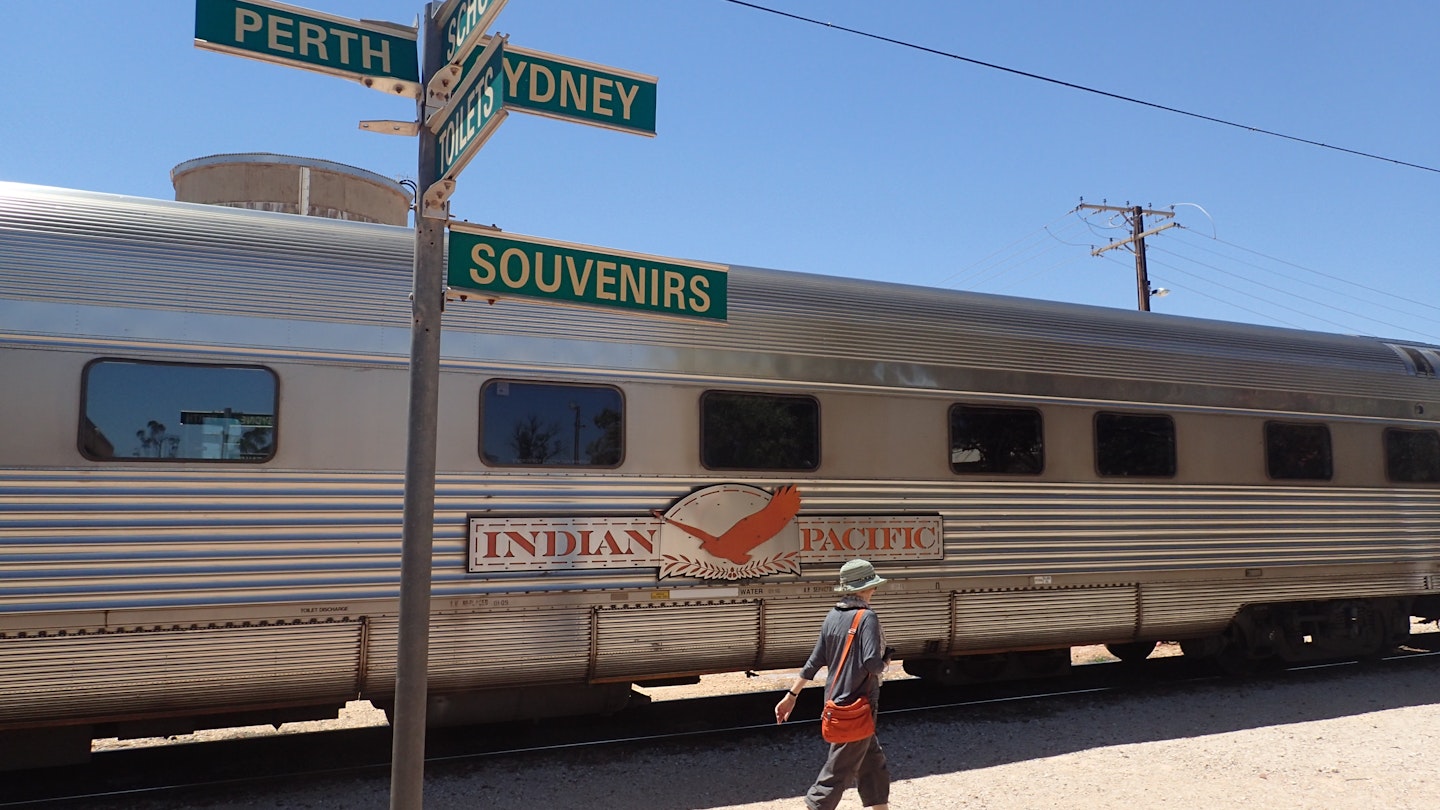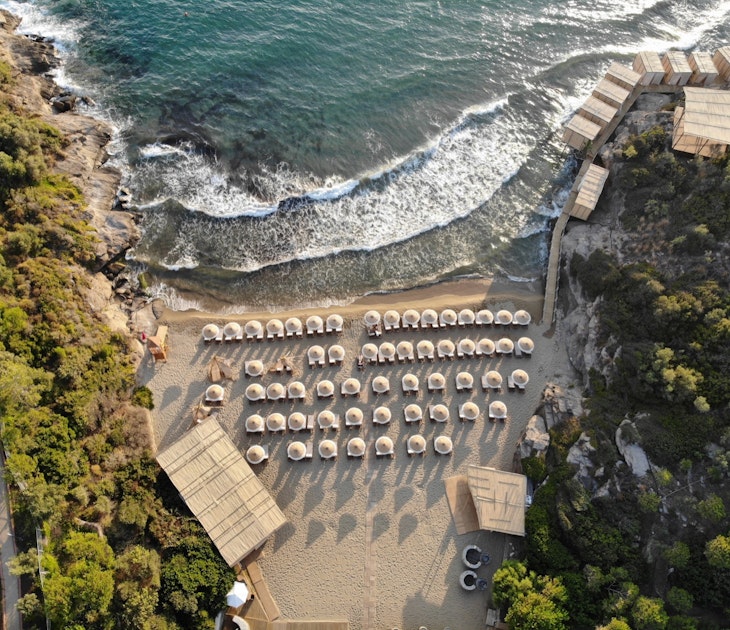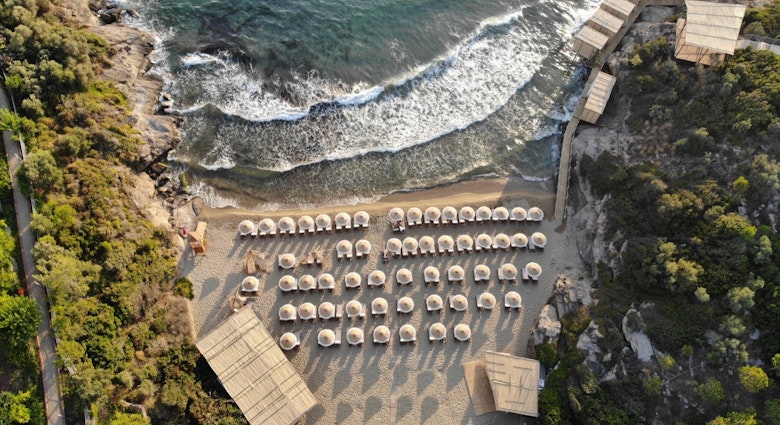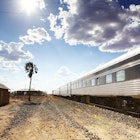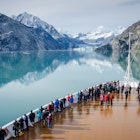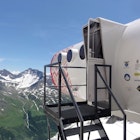For almost half a century, Australia’s Indian Pacific train has traced a three-day journey by rail between Sydney and Perth. Its 4,352km route between the Pacific and Indian Oceans takes in mountains, native bushland, desert, wheat fields and urban sprawl. Those taking this trip gain a close-up experience of Australia’s immense size and diversity, as its dramatic landscape slides past.
Why travel such a distance when you could fly? The attraction of a long-distance train is easy to explain. Compared to the cramped confines of a flight which merely delivers you to the starting point of your holiday, a sleeper train is a memorable travel adventure in itself. This is particularly true for the Indian Pacific, one of the world’s few transcontinental trains. By the end of the trip, you’ve experienced a broad cross section of Australia, and have a better understanding of its enormous scale.

A hotel on wheels
When the Indian Pacific commenced operation in 1970, it was a viable alternative to air travel, but with the budget airlines entering the market in the 21st century, train travel is now about the experience. The Indian Pacific only offers sleeper berths, in either its Gold or Platinum classes.
Gold class evokes the traditional long-distance sleeper. Most Gold cabins offer two bunk beds, one above the other. During the day these fold down into a lounge, a great spot from which to gaze at passing scenery. These cabins come with an en suite bathroom incorporating a toilet, sink and shower within a compact space. The single-cabin variants are smaller, contain a single bunk, and have access to a shared bathroom.

Travelling in Gold class, you have access to a comfortable bar and adjoining dining car with booth seating. At first glance a ticket seems pricey but it includes all meals and drinks. And the food is exceptional, often incorporating ingredients from the region through which the train is passing.
The more opulent alternative is Platinum class. At night a double bed folds down from the wall of your cabin, which by day is a comfortable sitting room. The Platinum bar and dining car is also more spacious, with meals served at tables with conventional seating.

Cruising overland
The itinerary of the Indian Pacific is similar to a cruise with included ‘off-train excursions’ along its route. These tours vary according to direction. On the westbound trek from Sydney for example, there’s a visit to the Pro Hart Gallery in Broken Hill, or an outing to the Sculpture Symposium in the Living Desert Reserve.
On the approach to Adelaide, you can join a coach tour to the Barossa Valley, which includes wine tasting and dinner at local wineries. Another option is a jaunt to Hahndorf, the attractive Adelaide Hills town founded by Germans. This excursion includes cheese or chocolate tastings, and dinner with a spot of Germanic yodelling thrown in.

On the eastbound journey from Perth, there’s a late-night tour of Kalgoorlie, with a visit to the massive Super Pit goldmine. At Adelaide, passengers can breakfast at the Central Market, or take in views from Mount Lofty.
Perhaps most fun of all, on the eastbound Broken Hill stop there’s a drag queen performance at the Palace Hotel, a homage to its starring role in the movie Priscilla, Queen of the Desert.
The land without trees
Along the route are many impressive landscapes, including the Blue Mountains west of Sydney, the green wine country outside Adelaide, and the golden wheat fields east of Perth. Beating all these is the Nullarbor Plain. In either direction, passengers spend most of a day traversing this desert, and its sheer flat emptiness is a startling sight.
The name of the place is derived from Latin: null + arbor = ‘no trees’. Instead there are low patches of grey-green saltbush and bluebush, clinging to the surface of the world’s largest outcrop of exposed limestone bedrock.

At 250,000 square kilometres in area, it presents an almost unchanging vista for hour after hour as the train forges through its heart. Here the Indian Pacific travels along the world’s longest stretch of dead-straight track, 478km without a bend.
It’s at this point of the journey you can find yourself sitting in the bar with a drink in hand, transfixed by the view – of nothing. There’s something compelling about sitting in comfort on this long moving town, as it slices through some of the most inhospitable country ever encountered by humans.
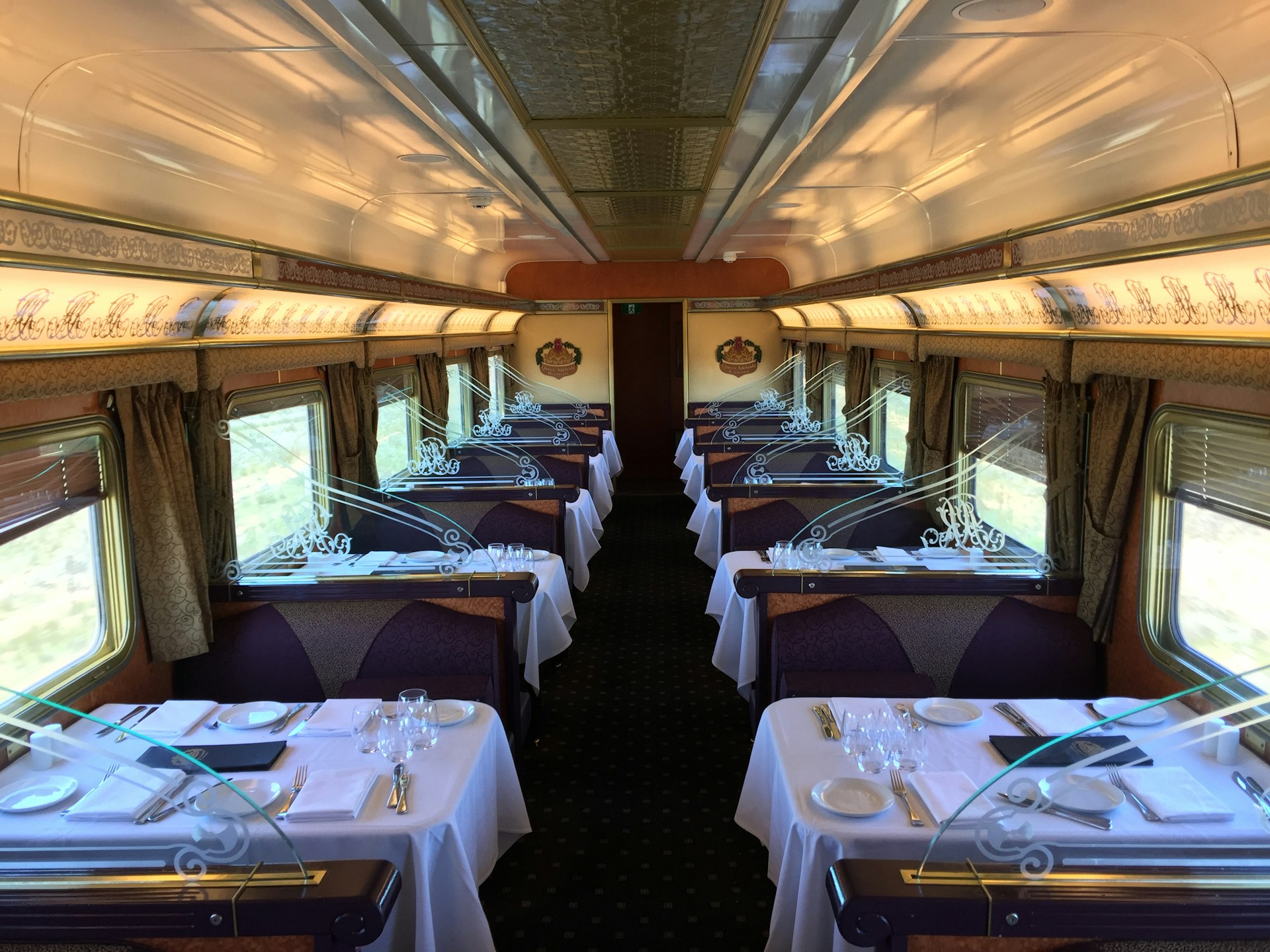
Making it happen
The three-day Indian Pacific journey isn’t cheap (about A$2000 one-way for an advance purchase ticket) though fares dip lower due to various factors, including direction of travel and season, but it’s worth it. Visit the website of Great Southern Rail (greatsouthernrail.com.au) for details.
Take clothes for a range of temperatures. A hat and sunscreen is a good idea but it can be chilly at night in the Outback.
Dressing for dinner? Don’t bother. The Indian Pacific is as relaxed as Aussies themselves – neat casual is the way to go.
Tim Richards travelled courtesy of Great Southern Rail. Lonely Planet contributors do not accept freebies in exchange for positive coverage.
